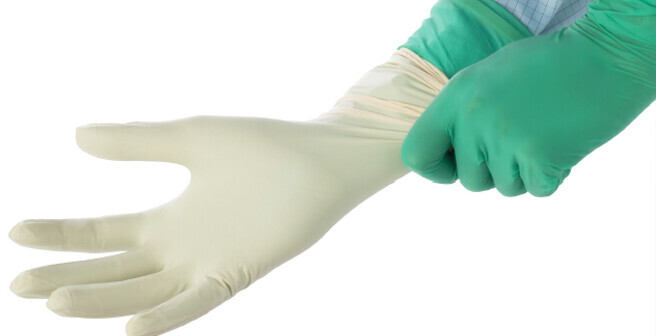The CDC estimates that about 385,000 sharps-related injuries occur annually among healthcare workers (HCWs) in hospitals.1 In the U.S. about half of the sharps-related injuries to HCWs go unreported.2 The operating room is a high-risk setting for occupational sharps injuries and bloodborne pathogen exposure due to frequent passing, handling, and disposal of sharps.3 Up to 70% of nurses and doctors have experienced a needlestick or sharp injury in their career, with 44% occurring in the operating room.4 The most common devices associated with injury are suture needles at 23.7%, and disposable syringes at 16.7%.4
Additionally, gloves worn by operating staff during a procedure are subject to mechanical and chemical stresses, increased length or wear time, surgery complexity, and various types of instruments which can contribute to perforation risks. Due to these conditions, perforations of surgical gloves can occur up to 43%5-7 of the time, therefore increasing risk of surgical site infections and pathogen exposure to the surgeon and staff members. When the outer glove is punctured, double gloving has been shown to reduce risk of exposure to patient blood by as much as 87%.8
Protect yourself and reduce your risk of perforation exposure through the recommended practices of double gloving, creating a neutral zone, and using correct technique to load and unload sharps.9
REFERENCES
1. Centers for Disease Control. (CDC). Workbook for Designing, Implementing and Evaluating a Sharps Injury Prevention Program. https://www.cdc.gov/sharpssafety/pdf/sharpsworkbook_2008.pdf. Published 2008. Accessed April 10, 2024.
2. Centers for Disease Control. (CDC). Stop Sticks Campaign, Injury report Sharps Injuries: Completing the Injury Report. https://www.cdc.gov/nora/councils/hcsa/stopsticks/injuryreport.html. Reviewed February 26, 2019. Accessed April 10, 2024.
3. Jagger J, Berguer R, Phillips EK, Parker G, Gomaa AE. Increase in sharps injuries in surgical settings versus nonsurgical settings after passage of national needlestick legislation. J Am Coll Surg. 2010;210(4):496-502.
4. International Safety Center. U.S. EPINet Sharps Injury and Blood and Body Fluid Exposure Surveillance Research Group. Sharps Injury Data Report for 2020. Report available at https://internationalsafetycenter.org/exposure-reports/. Updated 2020. Accessed August 15, 2023.
5. Carter AH, Casper DS, Parvizi J, Austin MS. A prospective analysis of glove perforation in primary and revision total hip and total knee arthroplasty. J Arthoplasty 2012;27: 1271–1275.
6. Barbosa MV, Nahas FX, Ferreira LM, et al. Risk of glove perforation in minor and major plastic surgery procedures. Aesthetic Plast Surg 2003;27:481–484.
7. Driever R, Beie M, Schmitz E, et al. Surgical glove perforation in cardiac surgery. Thorac Cardiovasc Surg 2001; 49:328–330.
8. Berguer R. Key strategies for eliminating sharps injuries during surgery. AORN Journal. 2011 Jul;94(1):91-96.
9. Centers for Disease Control and Prevention. (CDC). Stop Sticks Campaign. https://www.cdc.gov/nora/councils/hcsa/stopsticks/default.html. Page last reviewed: February 22, 2019. Accessed April 10, 2024.





